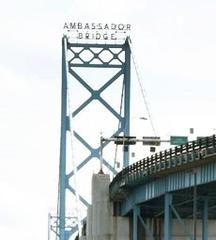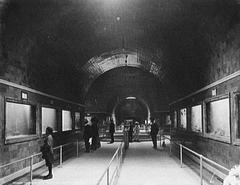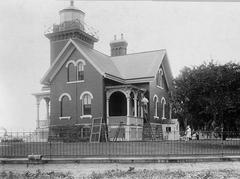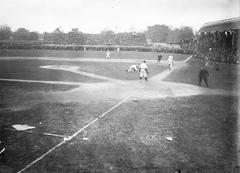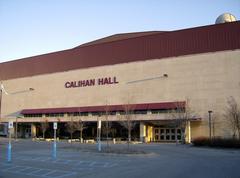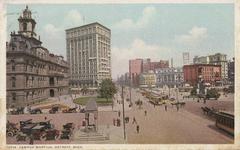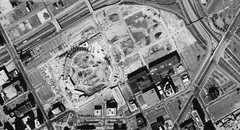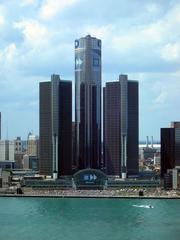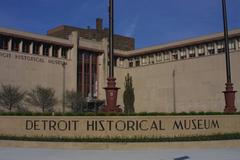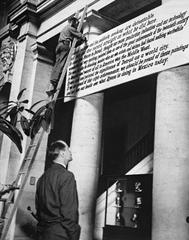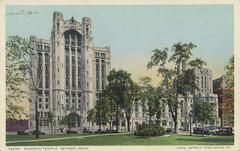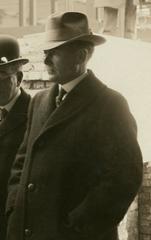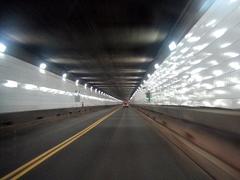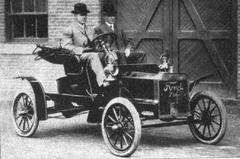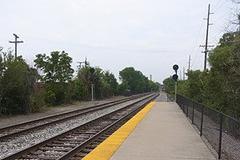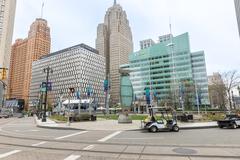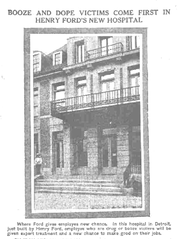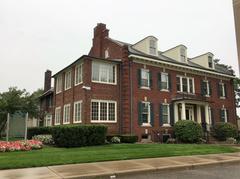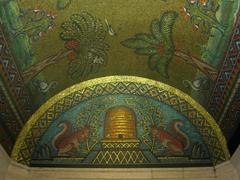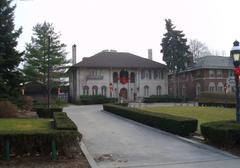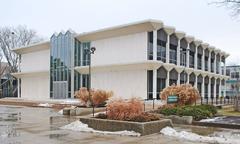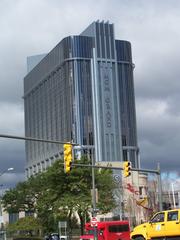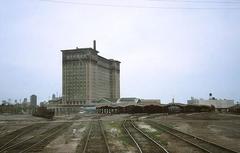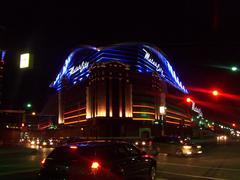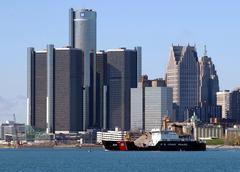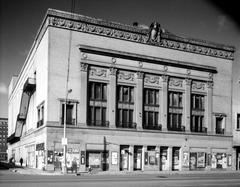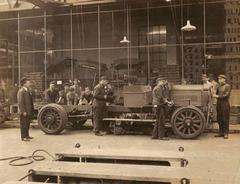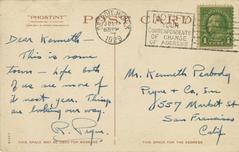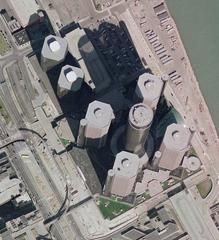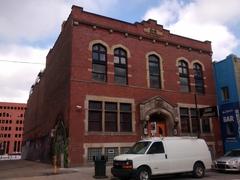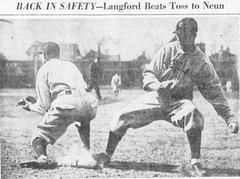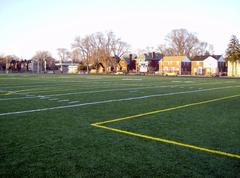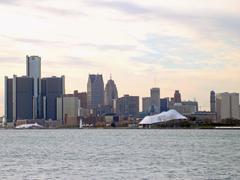West Canfield Historic District Detroit: Visiting Hours, Tickets, and Travel Guide
Date: 03/07/2025
Introduction
Nestled in Midtown Detroit, the West Canfield Historic District is a celebrated showcase of Victorian-era architecture, urban planning, and community resilience. Established in the 1870s on land once owned by Michigan statesman Lewis Cass—and later subdivided by his daughter, Mary Cass Canfield—this neighborhood stands as a living testament to Detroit’s Gilded Age. With its Queen Anne-style residences, broad tree-lined avenues, and historic cobblestone streets, West Canfield captures the spirit of Detroit’s upper-middle class in the late 19th century. As Detroit’s first designated local historic district, it draws history enthusiasts, architecture lovers, and curious travelers alike. This comprehensive guide provides essential information on visiting hours, ticketing, tours, accessibility, nearby attractions, and insider tips to help you experience one of Detroit’s most treasured neighborhoods (Detroit Historical Society, Historic Detroit, Wikipedia).
Historical Overview and Cultural Significance
Early Land Ownership and Origins
The district’s roots trace back to Lewis Cass, an influential Michigan statesman. After his death, his daughter Mary Cass Canfield inherited and subdivided the land in 1871, naming Canfield Avenue in honor of her husband, Captain August Canfield, a key figure in regional transportation infrastructure (Detroit Historical Society). This set the stage for the creation of one of Detroit’s most architecturally distinct neighborhoods.
Architectural Flourishing in the 1870s
During Detroit’s rapid urbanization in the 1870s, West Canfield became a coveted address for the city’s burgeoning professional class. Homes were built predominantly in the Queen Anne style, known for their ornate woodwork, asymmetrical facades, turrets, and decorative gables (Historic Detroit). Notable residences include the Armon J. Fair House, Colin Fox House, and George Prentiss House. The neighborhood’s original design featured wide, tree-lined streets, granite curbs, and brick sidewalks—an enduring reflection of 19th-century affluence.
Decline and Revitalization
By the mid-20th century, economic shifts and urban disinvestment led to the district’s decline, with many homes falling into disrepair (Detroit Historical Society). In response, residents like Beulah Croxford launched preservation efforts in the late 1960s, establishing the Canfield West-Wayne Preservation Association. Their activism resulted in West Canfield’s designation as Detroit’s first local historic district in 1970 and its listing on the National Register of Historic Places in 1971 (Wikipedia). The district’s cobblestone streets were restored using salvaged materials, and a 1997 boundary increase added additional Victorian structures.
Cultural and Preservation Legacy
West Canfield’s successful preservation efforts set a precedent for historic districts citywide. Today, the neighborhood represents both Detroit’s architectural grandeur and the power of grassroots activism, inspiring similar movements throughout Michigan (ClickOnDetroit).
Visiting Information
Hours and Admission
- Public Access: The West Canfield Historic District is a residential neighborhood open to the public year-round.
- Recommended Visiting Hours: Daylight hours, typically 9:00 AM–7:00 PM, offer the safest and most scenic experience.
- Admission: No tickets or entry fees are required for self-guided visits.
Guided Tours
- Preservation Detroit Midtown Tour: Offered on the 1st and 3rd Saturdays of each month; tickets and advance registration required (Preservation Detroit).
- Enjoy The D Strolling Brunch Tours: Combine local history with stops at area restaurants (EnjoyTheD).
- Self-Guided Tours: Downloadable maps and historical information are available from organizations such as HistoricDetroit.org.
Accessibility
- Sidewalks: Generally in good repair, but cobblestone streets may pose challenges for wheelchairs or strollers.
- Parking: Metered and non-metered street parking is available nearby, as well as a paid lot at Canfield and Second. Street parking is often free on Sundays—always check signage (Roadtrippers).
- Public Transit: The QLINE streetcar and several bus routes serve the area.
Architectural Highlights
- Queen Anne and Victorian Styles: Homes feature asymmetrical facades, ornate porches, stained glass, and decorative gables. The George Prentiss House stands as a neighborhood landmark (Visit Detroit).
- Cobblestone Streets: One of Detroit’s few remaining brick-paved avenues, restored to enhance the neighborhood’s historic ambiance.
- Landscaping: Wide lots, mature trees, and period street lamps create a park-like setting.
Community and Visitor Experience
- Atmosphere: Quiet, serene, and welcoming; ideal for leisurely walks, photography, and architectural appreciation.
- Events: Occasional open houses, community gardening days, and seasonal events provide opportunities for deeper engagement with residents.
- Etiquette: Remain on public sidewalks, respect private property, and use discretion when photographing homes.
Nearby Attractions and Amenities
- Cultural Center: Walkable to the Detroit Institute of Arts, Charles H. Wright Museum of African American History, and the Museum of Contemporary Art Detroit (Trek Zone).
- Dining: Midtown Detroit offers a variety of cafes and restaurants, including Avalon International Breads and other local favorites.
- Shopping: Boutiques and shops along Cass and Second Avenues.
- Restrooms: Limited public facilities—nearby cafes may offer restrooms for customers.
Frequently Asked Questions (FAQ)
Q: Is there an admission fee to visit West Canfield Historic District?
A: No, the district is free and open to the public.
Q: Are guided tours available?
A: Yes, both scheduled tours (which require tickets) and self-guided options are available.
Q: Is the area wheelchair accessible?
A: While most sidewalks are accessible, cobblestone streets may be uneven. Plan accordingly.
Q: Where can I park?
A: Street and lot parking are available nearby—always check for restrictions.
Q: Can I bring my pet?
A: Leashed pets are welcome on sidewalks; respect residents and clean up after pets.
Q: When is the best time to visit?
A: Spring through fall offers the best weather and scenery.
Practical Tips
- Dress for the Weather: The district is best explored on foot and tours operate rain or shine.
- Photography: Capture images from sidewalks; mornings and late afternoons offer the best light.
- Children: The neighborhood is family-friendly, but guided tours may be lengthy for young children.
- Safety: Midtown is considered safe and lively, but standard urban precautions apply, especially after dark.
Visuals and Media
- Photography: The district is ideal for capturing Victorian facades, historic streets, and mature landscaping.
- Virtual Tours: Several local organizations offer online tours and interactive maps.
- Maps: Include district boundaries and nearby parking in your planning.
Conclusion
The West Canfield Historic District is a vibrant blend of Detroit’s architectural beauty, rich history, and community spirit. Its origins, preservation story, and stunning streetscape make it a must-visit for anyone interested in Detroit’s past and present. Whether you’re exploring on your own or joining a guided tour, the district offers a window into the city’s Gilded Age and the power of local stewardship. Make the most of your visit by pairing your stroll with Midtown’s cultural attractions, and consider downloading a guided audio tour app like Audiala for an enhanced experience.
Take time to discover this Victorian gem—plan your visit today and immerse yourself in one of Detroit’s most beloved neighborhoods.
References
- Detroit Historical Society
- Historic Detroit
- Wikipedia
- ClickOnDetroit
- Preservation Detroit
- Visit Detroit
- EnjoyTheD
- Detroit Historic Districts
- Trek Zone
- Roadtrippers
